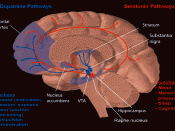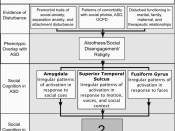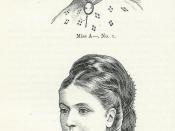PART A
DESCIBE & OUTLINE THE PHSYICAL/PSHYOLOGICAL CHARACTERISTICS OF ANOREXIA
Anorexia Nervosa (AN) is an eating disorder where physical and psychological symptoms develop because of starvation and other methods of inducing weight-loss. According to the Diagnostic Statistical Manual IV DSM -IV (4) there are 4 CRITERIA for the DIAGNOSIS of this disorder.
WEIGHT - the individual has a body weight that is LESS than 85% of that expected for similar height, weight and sex.
ANXIETY - there is an intense fear of becoming fat in spite of be considerably underweight.
BODY IMAGE DISTORTION - the individuals thinking about his /her bodyweight is distorted either by exaggerating its importance or by minimizing the dangers of being considerably underweight. They usually exercise a lot.
AMENORRHOEA - in females the absence of 3 or more consecutive menstrual periods. After ruling out clinical causes such as pregnancy is an indication of anorexia.
Psychological depression , low self-esteem & feelings of insecurity and guilt are also frequent features of anorexia.
Physical features are emaciated, often with low blood pressure, low body temperature, constipation and poor sleep.
Suicide is the most common cause of death through resistance to treatment. FEMALES are more likely to have anorexia and outnumber males by a FACTOR of 15.1.
13 - 18 years of age is the most common age of onset, however onset can also occur well before adolescence and in later life. In Britain it is estimated that 70,000 people have anorexia.
In Freudian theory eating and sex are related and refusing to eat can be seen as a refusal of sexuality.
Psychodynamic Theorists suggest that eating disorders are related to the onset of sexual development and hence most commonly found at the adolescent stage of development. It suggests that Anorexics are unable to face growing up and separation...



Good essay
very informative essay, good sentence structure
0 out of 0 people found this comment useful.